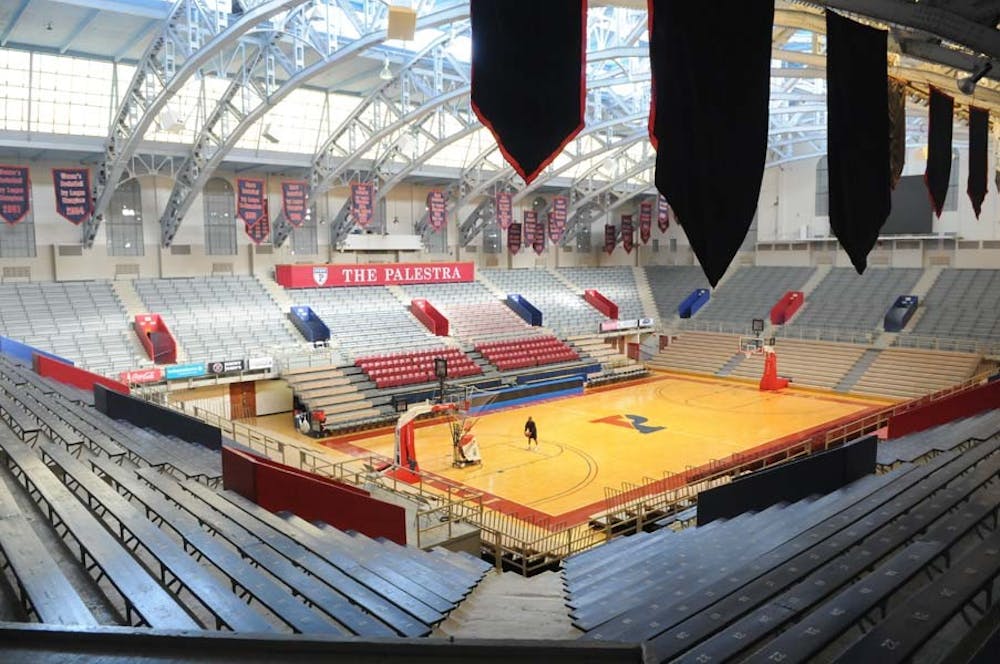
A week ago, Bill Bradshaw, Temple Athletic Director and Big 5 chair, entered into retirement. The Daily Pennsylvanian spoke with Bradshaw about the challenges the Big 5 faces in the current climate, and how that affects Penn.
Daily Pennsylvanian: Where was the Big 5 when you came into Temple and where is it now?
Bill Bradshaw: What makes the Big 5 unique is the same thing today as it was then, and it was back in the fifties and that’s five institutions in the same city, who have a similar commitment to basketball, who play each other in the round robin every year. That’s what makes it special. That’s the heart and soul of the Big 5.
Through all the changes and conference affiliation changes and coaches and athletic directors, presidents, all the changes the city of Philadelphia has gone through in terms of facilities, through all of that, one thing remains, and that’s the commitment by the five institutions to play one another every year in basketball. That’s what makes it so special.
DP: What do those current challenges entail?
BB: Well, you have to look at the landscape of Division I basketball over the years, and clearly one of the reasons no other city in the country or no other area has been able to do what Philadelphia has done and what the Big 5 has done, which is continue this relationship, one of the reasons is the continuing changes in conference allegiances. And Philadelphia is no stranger to that either.
Consider that entering into this year, there are five institutions in the Big 5 and they play in four different conferences. And that has restricted things like schedules. No longer are you able to see a lot of non-conference games played after December and back in the day most of the Big 5 games were played after the second semester had started on each campus, in the heart of college basketball calendars.
Television has also changed dramatically. It used to be that you could get a conference television package but now with the conferences owning all the rights to television, that is virtually an impossibility.
Then you look at corporate sponsorships too. Back in the day, you were free to get maybe a lot of corporate interest in the Delaware Valley to sponsor the Big 5, but now each institution has their own deal, and a conference may have its own deal, which restricts the kind of bank, the kind of automobile, the kind of soda, that you may want to put on the Big 5, because of maybe two or three different contracts that each Big 5 school has.
So that’s been the biggest difference in keeping the Big 5 together and I applaud the Big 5 for the ability and the skills to keep the conference together in spite of these changes.
DP: Do you think it’s the corporate side of things that have led to games being played at the Palestra less often?
BB: No, I would say that Villanova building a fieldhouse, Temple building a 10,400 seat arena on campus, La Salle and St. Joe’s expanding their arena has much more to do with teams taking their own games to the campus arena and the pressure from those students and the ticket holders to play those games on their campuses rather than a neutral site.
Also, it’s the finances for that. When the Big 5 was playing doubleheaders in the Palestra and splitting the revenue, you had lucrative television agreements, lucrative corporate agreements, that allowed those games to be played in the Palestra, which was a significant amount of revenue or incentive for those schools to want to play doubleheaders in the Palestra.
But as things changed, and television sponsorships went to the conferences and corporate sponsors went to the universities directly, and games could not be scheduled in January, February, early March, that really restricted the type of revenue a team could earn by playing a double header in a neutral site, clearly opposed to the type of money they could make playing the games at home.
DP: What questions has Drexel’s success caused those in the Big 5 to ask?
BB: The Big 5 is the only conference in the country that has never had a conversation about expansion. Again, being unique to anything in the country and it goes back to the formation of the Big 5 in the fifties when all five universities they had appearances in the NCAA tournament, all of them, and I think it was that success that led the athletic directors at the time to form this association and there really hasn’t been any conversation.
A lot of people from around the country would say to us, “How do you do that, how do you keep it together, how do you take five schools all those years and keep them together?” And that’s what makes it so special. There really hasn’t been any conversation about doing anything different besides having five institutions every year.
And if you were to ask anyone from the Big 5 schools, I’m sure you would hear the same things.
The Daily Pennsylvanian is an independent, student-run newspaper. Please consider making a donation to support the coverage that shapes the University. Your generosity ensures a future of strong journalism at Penn.
DonatePlease note All comments are eligible for publication in The Daily Pennsylvanian.





